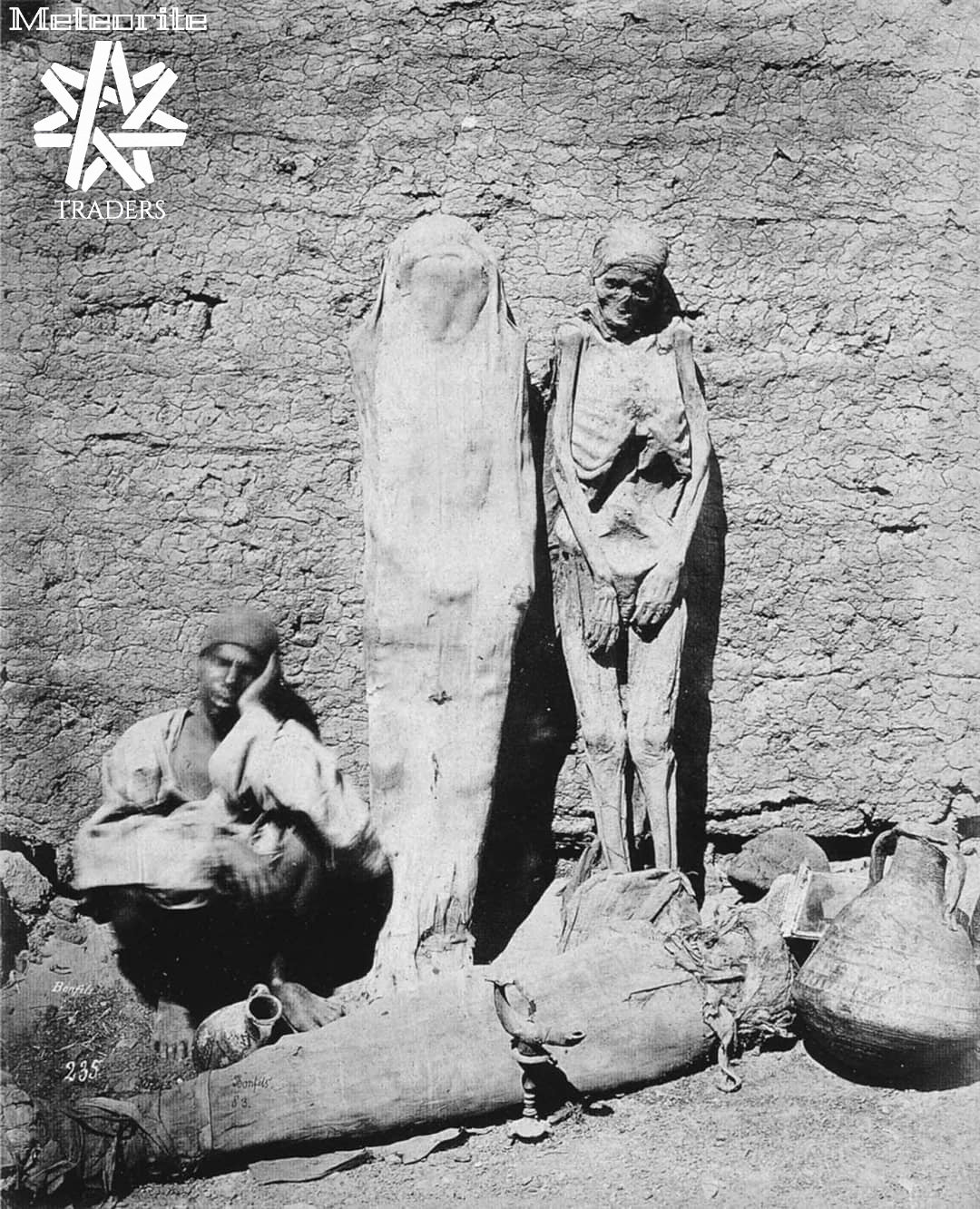During the Victorian era of the 1800's and due to the conquest of Egypt by Napoleon, there was an influx of Ancient Egyptian history into the elite circles of Europe.
At that time, mummies were not given the respect that they deserved and in fact, mummies could be purchased from street vendors (as shown in the picture) to be used as the main event for parties and social gatherings.
The elites of the era would often hold “Mummy Unwrapping Parties”, which, as the name suggests, would involve a mummy to be unwrapped in front of an excited audience, cheering and applauding all the while.
During that time, the well-preserved remains of ancient Egyptians were also routinely ground into a powder and consumed as a medicinal remedy. Indeed, so popular was pulverized mummy that it even instigated a counterfeit trade to meet demand, in which the flesh of contemporary street beggers was passed off as that of ancient mummified Egyptians.
.
As the nineteenth century advanced, mummies became prized objects of display, and many of them were purchased by European and American private collectors as tourist souvenirs. For those who could not afford a whole mummy, disarticulated remains – such as a head, hand, or foot – could be purchased on the black market and smuggled back home.
Do you collect display items of art and prehistoric relevance?
We actively purchase and supply a range of home decor items for display in your home, workplace, or gallery. From rare mineral specimens to authenticated pre-Colombian pottery.
Subscribe to stay informed!

